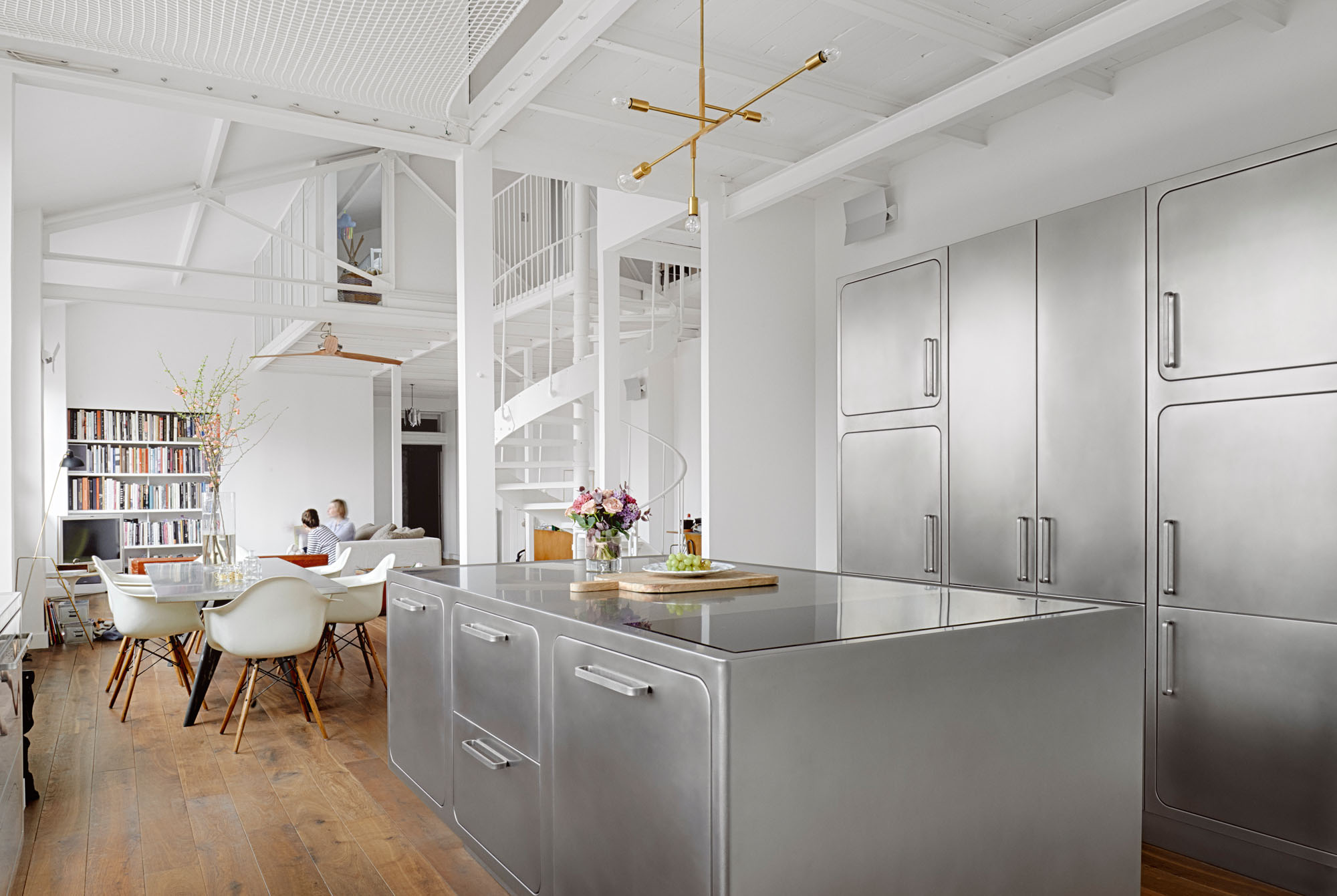
After a 4-year absence, EuroCucina, one of the biggest world-wide events dedicated to design and innovation in the kitchens industry, returned to Milan. This event, every other year, showcases the latest kitchen trends to visitors and industry professionals.
Having skipped the 2020 edition due to the pandemic, Milan returned to hosting the 23rd edition of this extraordinary international trade fair from 6th to 12th June 2022. In two exhibition halls, spanning a total surface area of 16,000 square metres, 82 of the biggest brands in the world displayed their wares, revealing all the latest news and kitchen trends.
Let’s have a closer look at the kitchen trends for 2022-2023. During these last 4 long and complex years, designers and manufacturers asked themselves about the role played by the kitchen in the contemporary home, especially during the pandemic when most people were forced to work from home.
The kitchen macro trends are therefore tied to this ever-changing place. A setting that looks less and less like a traditional kitchen and increasingly resembles a living room. Stepping away from being merely a place of service and moving towards becoming the beating heart of domestic life. Less and less “fast” and more and more “slow”.

The kitchen is confirmed as being a fluid and dynamic, empathic and welcoming place. A hybrid place for meetings and sharing. A place where the majority of a day’s routine activities take place (and often overlap). So not just a place for cooking and eating meals, but also a venue for hosting friends, winding down, chatting, playing, watching TV, studying, working even…
But beware. A hybrid kitchen doesn’t mean an anonymous and plain one… on the contrary. The challenge for manufacturers and designers is specifically to bring all these activities together, each one so different from the next, in a place that welcomes them all harmoniously.
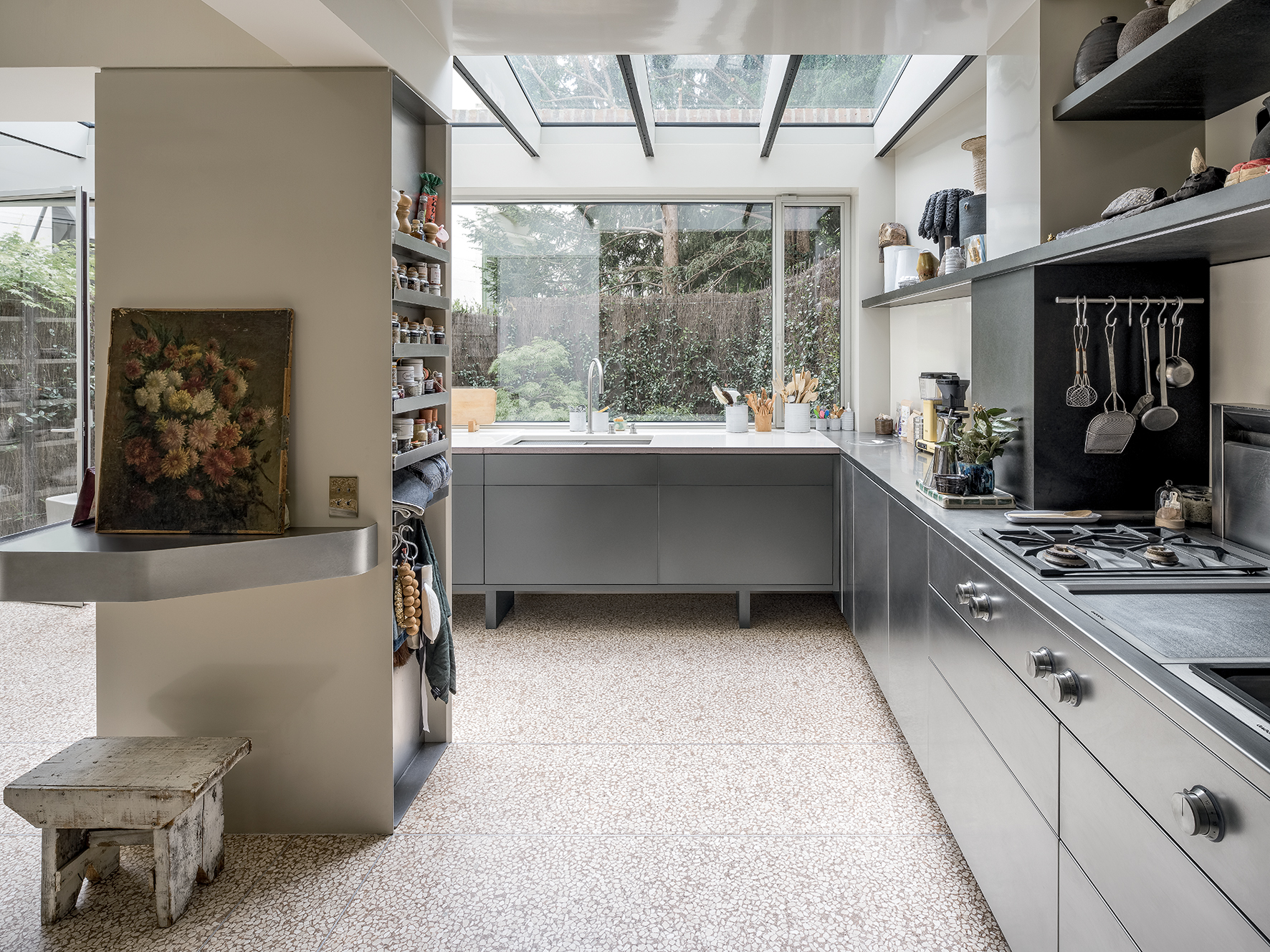
Because the kitchen remains an emotional place first and foremost, beautiful and welcoming, somewhere to feel at ease (along, with family or among friends) and to enjoy the domestic routine with natural peace of mind.
Now that the key role of the kitchen as the central room of the home has been ascertained (or rather confirmed), let’s now see what the designer trends in the kitchen are.
The silhouettes of new kitchens
Specifically, as they need to accommodate an array of different activities, new kitchens are undergoing a rapid transformation.
This process of “evolution of the species” has reduced, if not done away with altogether, those elements which characterised them the most as traditional kitchens.
Modern-day kitchens are increasingly transforming into monoblocks with sculptural and linear shapes. Genuine domestic altars where the rituals of preparing and eating food take place every day.

This is why we are witnessing the comeback of kitchens with an island. Extra-thick tops are preferred, or alternatively tops with corners cut at a 45° angle; these two solutions emphasise the monoblock look.
Where possible, sinks, taps and hoods are concealed, to avoid “tainting” the clean-cut geometric and minimal look of the volumes.

For the same reason, handles tend to disappear, leaving room for groove openings. And, as soon as possible, the trusted old wall unit is removed: the last witness to an old-world kitchen.
Specifically because the kitchen tends to have a clean-cut, minimal shape, the walls are embellished with storage elements, display units, bookcases, open shelving, warm wall panelling. Impeccable and sophisticated designer features, embellished by the clever use of functional yet concurrently ambient LED lights.
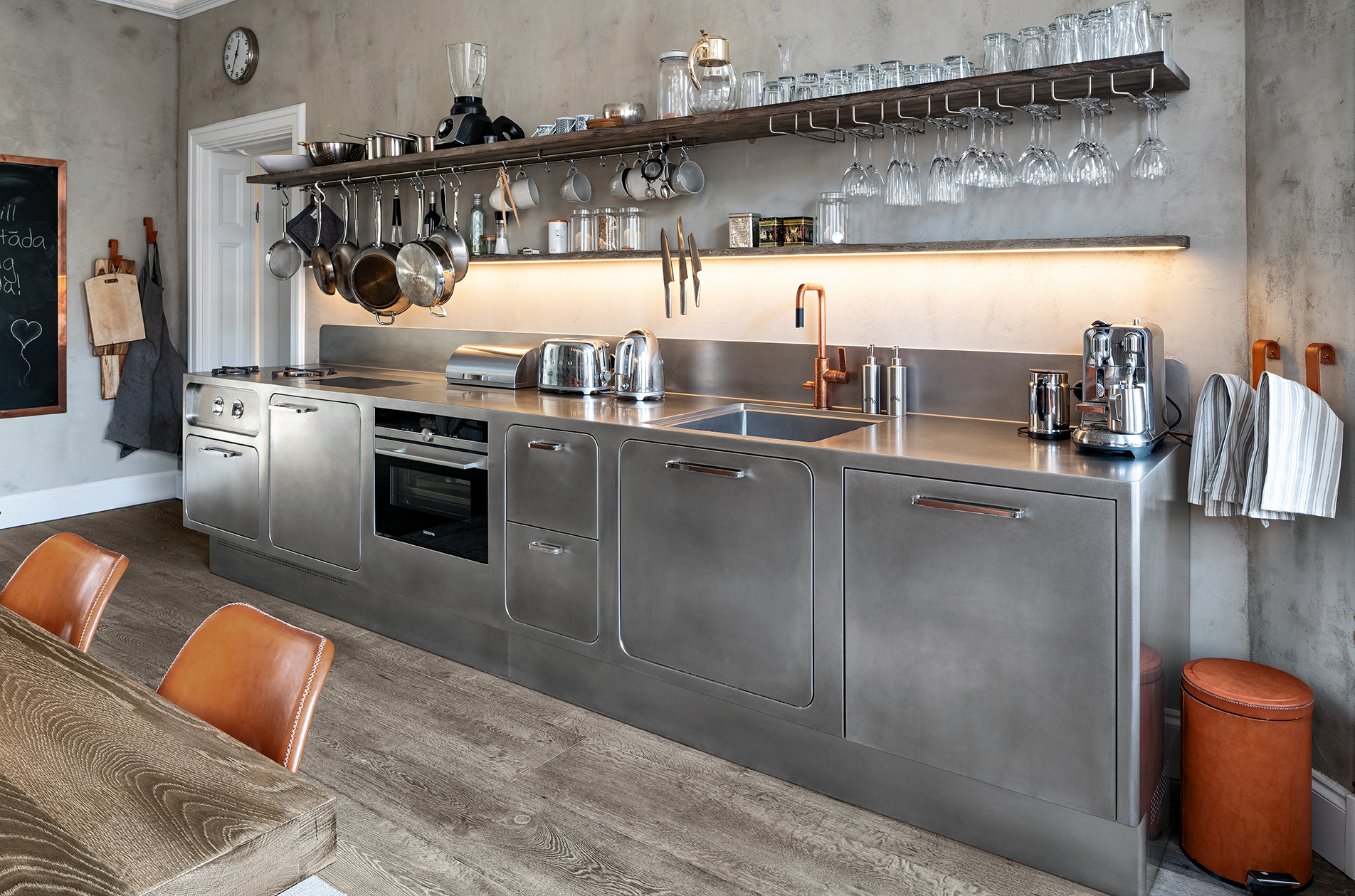
When the living room-kitchen space is rather compact in size, kitchens tend to be concealed behind retractable doors or discrete roller blinds, to be revealed only when required.
Those who have more room can opt for a clear separation between the various functions: cooking, washing, preparing and preserving food. And quite often the most “functional” areas (refrigerators, ovens, larders, sinks) are hidden in discrete “walk-inareas” concealed from view by invisible doors, perhaps integrated into the kitchen wall panelling.

In other words, the separation between the two rooms no longer exists. The living room expands and encompasses the kitchen. And the kitchen becomes one of the essential features of the living room, together with the table, the sofas, the bookcase and the TV corner.
Trending materials and colours in new kitchens
During these last few years spent at home, perhaps working or with children home schooling, we all suffered from the lack of closer contact with nature. And in those cases where nature is not physically present (in the form of a garden or a terrace with pot plants), then the home can absorb its shapes and colours to offer its inhabitants a new feeling of well-being.
So natural materials play the absolute starring role, better still if they are mixed together. Stainless steel, wood and natural stones are definitely the most popular in contemporary kitchens. Alternatively, marble-effect porcelain stoneware can be used for the tops and doors. It is a hard-wearing, practical and lightweight material, which can be used for thin coverings, even large in size.
Several kitchens even accommodate greenery within them, incorporating plants or small trees. Others are decorated with pots to grow aromatic herbs and spices. Others still leave room for green waterfalls or walls covered with creepers which stretch along the wall panels or partitions…
To make the kitchen surfaces even warmer and more appealing on the eye and to touch, polished finishes have been replaced by matt ones; stones and marbles are processed with a “natural” effect, woods show off their warm grain patterns or they take on textured, three-dimensional finishes, very similar to those used on wall panelling.
What about the trendy colours in the kitchen? Natural hues, of course. With a particular focus on shades of grey, green (sage green or jungle green first and foremost), to various tones of sand and soil in all their variations. They are above all warm, soft and velvety colours. Yet there is no shortage of traditional white (better still if it veers towards ivory) and black, matt – of course – which has recently been “unleashed” in the kitchen too.

Trendy appliances in the kitchen
Perhaps simply calling them appliances is a little restrictive. The new kitchens incorporate genuine “tools for well-being”.
We haven’t used this word at random, since the main objective of home automation (including that applied to household appliances) is in fact to improve, simplify, make life more beautiful and easier for its inhabitants. Including the kitchen.
The new ovens, for instance, recognise and weigh food, set the most appropriate programmes and clean themselves when cooking is over. So the chef has more free time.
The hoods don’t just focus on suctioning, but rather they monitor, purify and often sanitise the air to make life at home safer and more enjoyable.
The new taps feature “touch” controls which dispense hot or cold water, natural or sparkling, while also saving water resources.
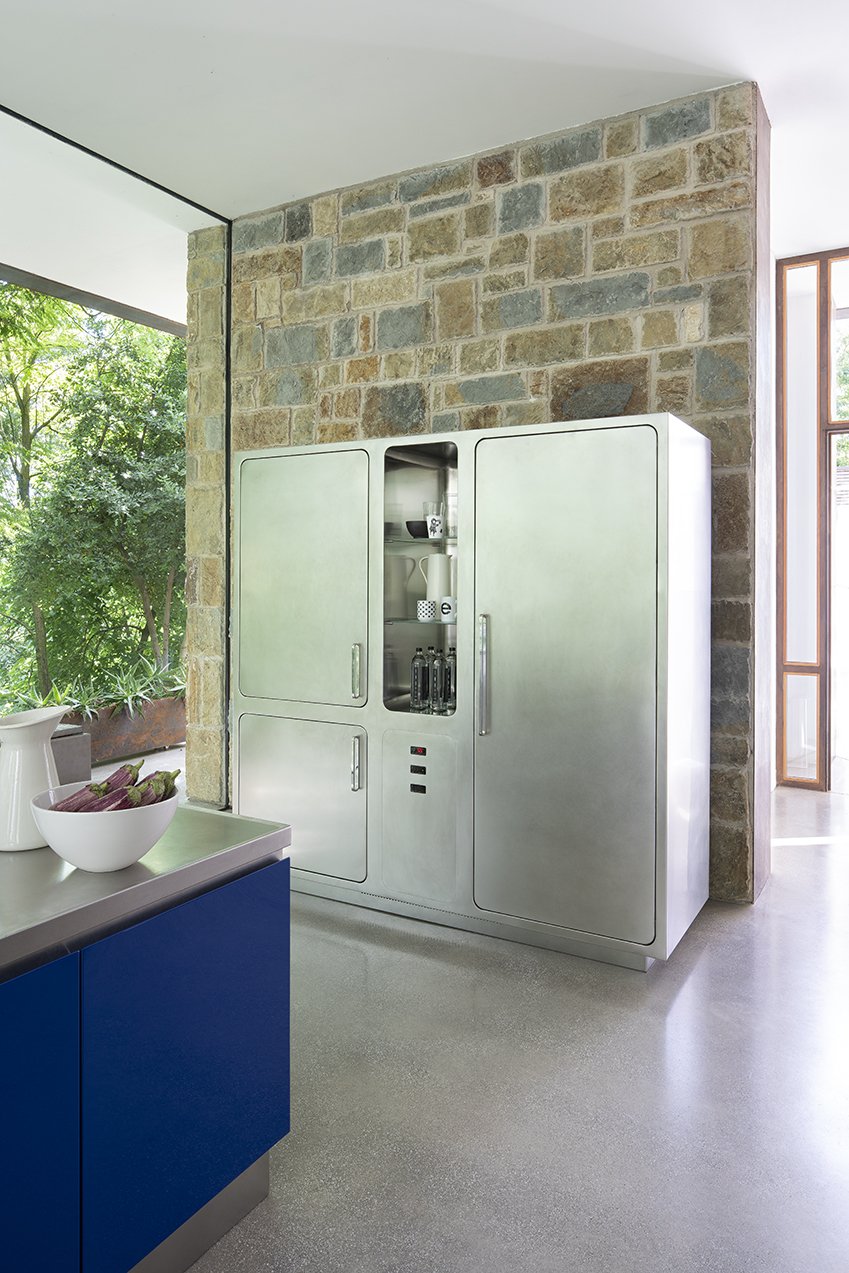
The latest-generation refrigerators are designed to optimise the cold chain, giving you the chance to adjust the degrees in each individual compartment, so that each food is preserved at the right temperature while avoiding waste, or worse, possible intoxications.
Stainless steel kitchens are confirmed as being the absolute stars of the contemporary home, mainly for two reasons.
The first one being that stainless steel is a safe and hard-wearing material, which is naturally antibacterial, easy to clean and to sanitise. And we recently learned how important it is to guarantee maximum hygiene and cleanliness in the kitchen.
The second reason is that stainless steel kitchens add plenty of character to any setting, be it classic or modern. What’s more, thanks to its neutral hue, stainless steel blends in seamlessly with any existing furniture. Its metallic surfaces reflect the surrounding furnishings, taking on their shades.
Stainless steel kitchens, in short, are veritable designer kitchens which, unlike many others, never age, never go out of fashion and fit in perfectly with any surroundings.
The latest trend in stainless steel finishes favours surfaces orbitally polished by hand, a craft-based treatment that creates a matt, uneven effect that is pleasing to the eye and to the touch.

Alternatively, another popular pick is stainless steel painted in trendy colours, mainly natural shades of green and beige.
On the other hand, for the more sophisticated clientèle, and for all those who love a design with plenty of character yet absolutely elegant, the most on-trend finish is polished mirror-finish stainless steel.

However, the most obvious kitchen trend at this edition of EuroCucina is having an outdoor kitchen.
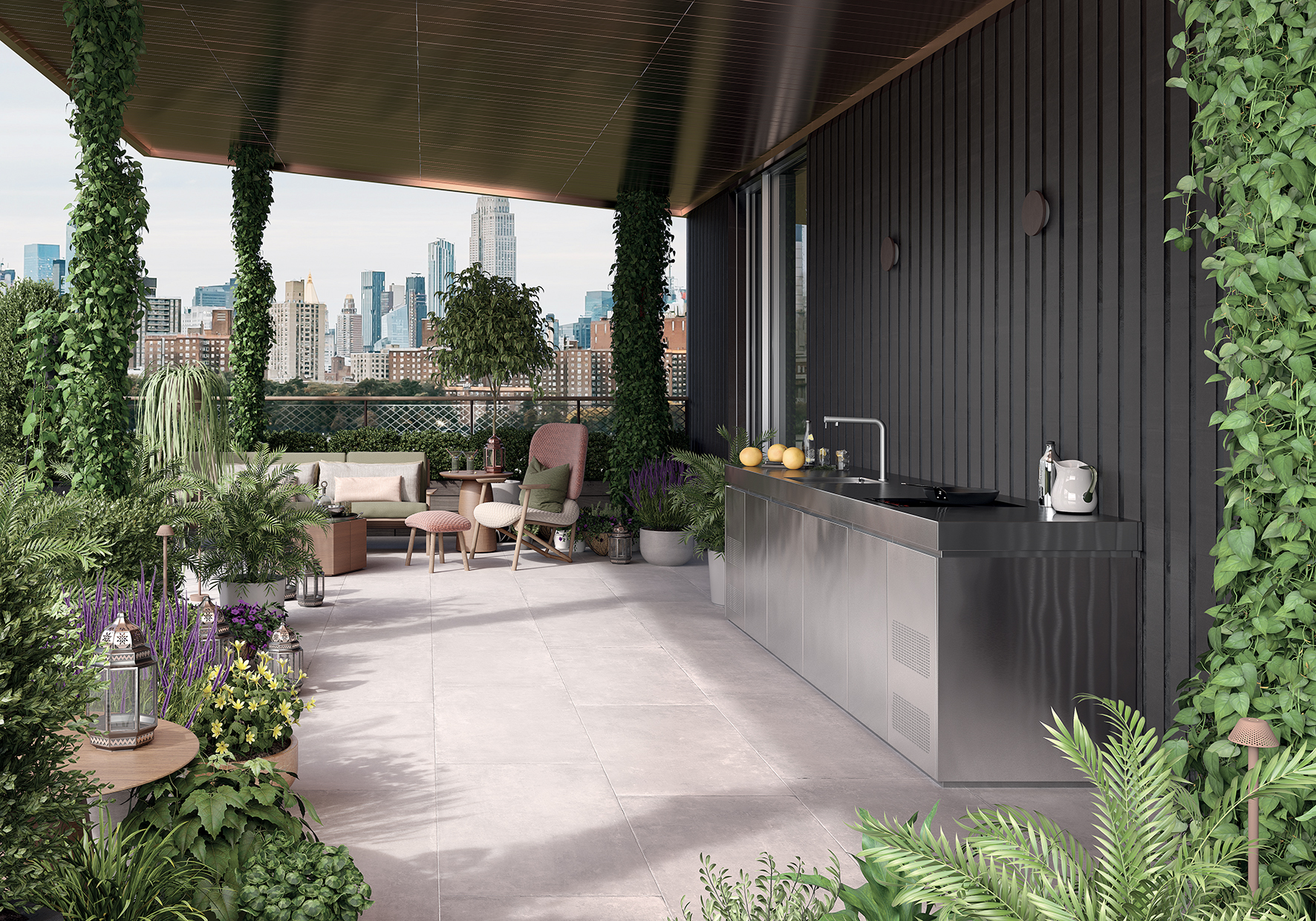
While up until a few years ago, cooking outdoors meant setting up a barbecue “on the fly” or lighting a fire in a brick fireplace, the new outdoor kitchens are genuine super-accessorised kitchens, similar in both shape and function to indoor kitchens. But that’s not all. These days, outdoor kitchens can be used whatever the season!

But be careful! Not all outdoor kitchens were created equal. Outdoor kitchens can have specific characteristics which must be taken into consideration before making your purchase, in order to avoid unpleasant surprises.
First of all, the materials must be taken into account. Outdoor kitchens must be made of special materials since they are exposed to moisture, all weather, high temperatures in summer and frost in winter. The most suitable material is without a doubt AISI 304 stainless steel*, a knock- and temperature-resistant material that is waterproof, is corrosion-proof and is immune to the majority of acids.
Secondly, outdoor kitchens remain out in the open air 12 months of the year, so they need to be very easy to clean. This is why it is better to avoid those kitchens made from separate modules and prefer monoblock welded outdoor kitchens, without any cuts, steps, visible joints or hard-to-reach corners (which are all difficult to clean spots where dirt, dust, food residue or, worse, mould, mildew and bacteria can build up).
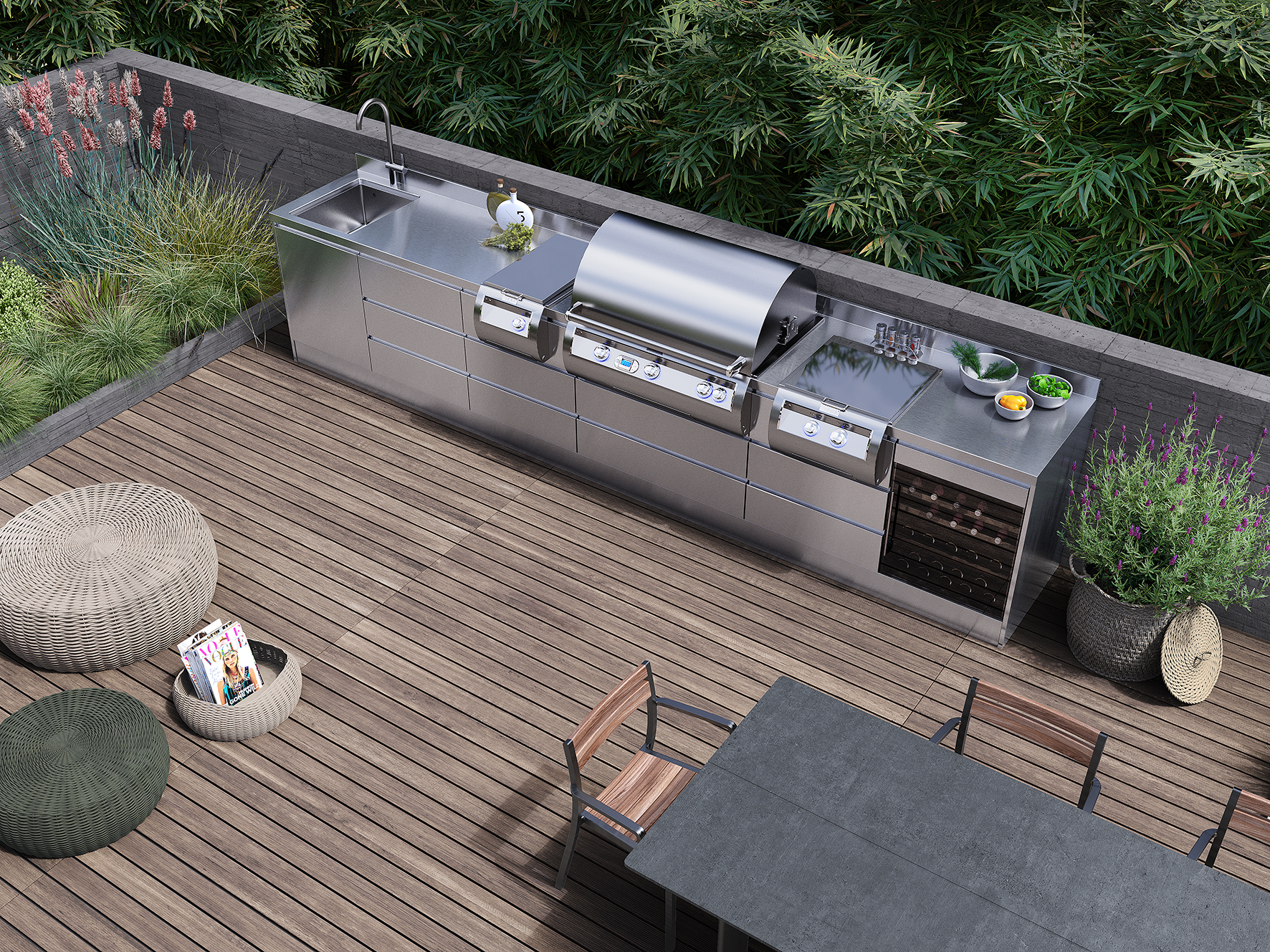
Unfortunately, several exhibiting companies at the trade fair still seem to pay more attention to styling than to practicality. But since outdoor kitchens are a fairly recent trend, we are convinced that in future editions these gaps will be filled…
* Only in the case of outdoor kitchens fitted near the sea or a swimming pool, AISI 316 stainless steel – an alloy which is more resistant to salt air and chlorine – should be preferred.
BROWSE ALL ABIMIS OUTDOOR KITCHENS